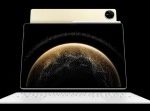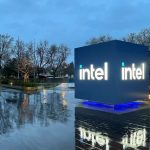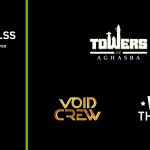Yesterday’s Forza Horizon 5 update added NVIDIA DLSS 3 (and Reflex) support to the PC version. While the open world racing game was released quite a while ago, on November 9th, 2021 to be exact, the extraordinary popularity of Playground’s latest game ensured its continued support.
As a quick reminder, Forza Horizon 5 became the largest Xbox Game Studios debut in terms of day-one figures with 4.5 million players and later more than doubled that feat with ten million players in the first week, another record for Xbox and Game Pass. The NPD then ratified a launch month sales record for the whole Forza franchise. On top of all that, Forza Horizon 5 also got excellent scores from critics (9.5/10 here on Wccftech) and multiple awards, including three at The Game Awards 2021, tied with It Takes Two for most wins at that event.
All that is to say, Playground Games had a lot of reasons to keep improving the most successful game they had ever made. Late last year, they added upscaling technologies like DLSS 2 (Super Resolution) and AMD FSR 2 alongside in-game real-time ray traced reflections, all of which were flat-out improvements.
As such, I approached this NVIDIA DLSS 3 test believing it to be another slam dunk. Forza Horizon 5 is, after all, notoriously heavy on CPUs due to its large open world environments.
Indeed, the handy benchmark tool built into the game reveals a sizable frame rate boost provided by Frame Generation (DLSS 3). As you can read below, Forza Horizon 5 at max settings (ray tracing included), 4K resolution, DLSS Super Resolution set to Quality, and Frame Generation ended the benchmark with an average of 168 frames per second, a 31.25% improvement over the 128 FPS I got with Frame Generation disabled.
The PC, as you can read in the benchmark report, is powered by Intel’s i7 12700KF CPU and NVIDIA’s GeForce RTX 4090 GPU.
DLSS 3 ON
DLSS 3 OFF
It’s far from the biggest performance jump we’ve seen to date with DLSS 3, but it’d still be more than welcome for enthusiasts with very high refresh rate displays. Frame Generation could also be used with DLAA instead of DLSS to get even better visual quality while retaining great performance.
However, when you actually look at Forza Horizon 5 with DLSS 3 enabled, you immediately spot several issues with this implementation. There are several visual artifacts, including some ghosting, but the worst offender is the greatly deteriorated sense of fluidity compared to running the benchmark with Frame Generation off, despite the lower frame rate recorded when using the latter option.
It’s not stuttering per se; it’s just that everything looks far choppier with DLSS 3 enabled, as you can see in the comparison gameplay footage below.
Needless to say, something is off with the implementation. This is by far the worst DLSS 3 integration I’ve seen to date, and I cannot but hope that NVIDIA and Playground Games will work together to fix it as soon as possible. Today was supposed to be a happy day for Forza Horizon 5 fans due to the release of the Rally Adventure expansion, but this unfortunate hiccup is certainly a letdown for gamers who looked forward to leveling up their game experience.
A final note on latency. You might have read that the DLSS 3 benchmark registered lower latency, but that’s simply because Reflex can be only enabled alongside Frame Generation, unlike most games. It’s another missing feature/bug that I hope will be resolved in the near future, as Reflex is not intended to be exclusive to owners of RTX cards.
The post NVIDIA DLSS 3 Is Poorly Implemented in Forza Horizon 5, Causing Worse Fluidity and Artifacts by Alessio Palumbo appeared first on Wccftech.







